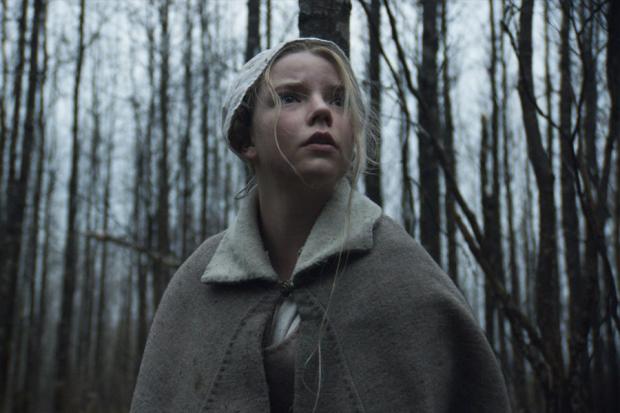The Witch: What’s That in the Woods?
Modern horror movies walk a fine line between ambiguity and incoherence. H. P. Lovecraft always left the reader with the sense that nothing in the story was as horrifying as what existed just outside its borders. And at least since Stanley Kubrick’s The Shining, filmmakers have found that leaving parts of the story unexplained will send the audience out of the theater with a tingle of unextinguished dread. But in the wake of the Nightmare on Elm Street series, too many directors adopted its “anything can happen in a dream” logic to justify scenes that played effectively in the moment but didn’t fit into a satisfying whole. You left with the theater with the impression that the filmmakers didn’t really understand it, either.
The Witch is an art film masquerading as a horror movie, or maybe vice-versa. I was surprised to see that this film festival favorite will be opening in the multiplexes. Credit the distributor, perhaps encouraged by the success of last year’s crossover hit It Follows, for having faith in the film’s ability to appeal to a broad audience, though that faith may not be deserved.
This 17th-century story opens with a family being cast out of a pilgrim settlement for the father’s unspecified crime. William (Ralph Ineson) defends himself as “speaking the true words of Christ,” but his interpretations apparently didn’t square with those of his neighbors, who, as history tells us, were not very liberal about such differences.
With his wife Katherine (Kate Dickie, who you may recall being tossed out of a moon roof on Game of Thrones) and five children, William sets up a farm on the outskirts of a bleak forest. We catch up with them at the peak of autumn. Winter is in the air, and the crop was not as good as it needed to be. William isn’t much of a hunter, and without the support of a larger community they’re really going to need the aid of a deity to survive until spring.
That’s when the baby goes missing.
At this point, I still hadn’t figured out just whose baby it was. William and Katherine’s brood includes a teenaged daughter, Thomasin (Anya Taylor-Joy), who spends a lot of time tending to the tot. Was the infant hers? Was it born of incest, and was that the crime for which they were banished? Apparently not. But it’s not established that William and Katherine were the parents until later.
Just after the baby’s disappearance, we get a brief montage of quick, dark images that appear to show old naked people indulging in a blood ritual. Did the parents kill their own child as a sacrifice? Are these other people who took the child? Was it someone’s bad dream? Who knows—that’s the last we see of them.
The loss of their youngest is the first step in what is a rapid downward spiral for this family, one that reliance on faith does nothing to salve. Suspicion falls on Thomasin, partly because of an ill-considered joke she makes to her younger twin siblings, and partly because her pubescence makes her a dangerous figure in stories like this. Caught somewhere in between is middle brother Caleb (Harvey Scrimshaw). And that’s more than enough plot description, because I’m already afraid that I’ve described something that may reflect an incorrect understanding of the story.
On the surface, there is an awful lot to like about The Witch. It is the first film by writer-director Robert Eggers, formerly employed as an art director, production designer, and costumer designer on independent films. That background bespeaks an attention to physical detail that is in abundance here, even if the most striking thing on view is the unforgiving forest. The nearly monochromatic photography and the eerie score all contribute to a sense of dread, a fear of something felt but not seen or understood. The performances are uniformly excellent, particularly those of young actors Taylor-Joy and Scrimshaw.
But to my mind, Eggers wants to support too many possible interpretations of his “New England folk story,” as an opening title calls it. Is it a parable of religious hysteria, a precursor to the infamous witch trials that took place six decades after this story? (Though you’d need a copy of the press notes to know that The Witch takes place in 1630.) Is it a fable of feminist emancipation? Is it a dream of madness? All seemed possible to me, more so because the combination of thick British accents and period diction—“thee” and “thou” and “thy”—made much of the dialogue hard to understand.
See it with someone you enjoy arguing with.

